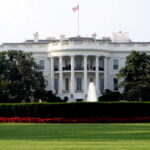The FIFA Club World Cup 2025 marks a watershed moment in global club football. For the first time in its history, the tournament is expanding from a 7-team event to a 32-team mega-competition, rivaling the scale and grandeur of the FIFA World Cup. Hosted in the United States from June 15 to July 13, this month-long football festival brings together the world’s best club teams from every continent. The tournament not only signifies FIFA’s commitment to the globalization of club football but also offers fans a unique blend of tactical styles, star power, and intense competition.
In this article, we explore the tournament’s new format, participating teams, venues, group stage structure, expectations, and why it might redefine the global football calendar.
1. Why the 2025 Club World Cup Is a Big Deal
Traditionally a 7-team event held annually in December, the Club World Cup featured the continental champions of FIFA’s six confederations, plus a host nation club. While that format was compact and efficient, it lacked the scale and fan engagement of larger international tournaments.
The 2025 edition flips that script.
With 32 teams, the competition adopts a FIFA World Cup-style format: eight groups of four teams, top two from each group advancing to a 16-team knockout phase. This change allows more clubs from all over the world—especially from outside Europe and South America—to gain exposure and compete on a larger platform. For fans, it means more games, more stories, and more upsets.
2. Participating Clubs: Who’s In?
FIFA allocated slots based on a mix of historical performance and regional merit. Here’s a breakdown:
- UEFA (Europe): 12 teams – Includes Real Madrid, Manchester City, Chelsea, Bayern Munich, Inter Milan, PSG, and more.
- CONMEBOL (South America): 6 teams – Flamengo, Palmeiras, River Plate, etc.
- AFC (Asia): 4 teams – Al Hilal (Saudi Arabia), Urawa Red Diamonds (Japan), and more.
- CAF (Africa): 4 teams – Al Ahly (Egypt), Wydad Casablanca (Morocco), etc.
- CONCACAF (North America): 4 teams – Club León, Monterrey, Seattle Sounders, etc.
- OFC (Oceania): 1 team – Auckland City (New Zealand).
- USA as Host (1 team): Likely a top-performing MLS side, such as LAFC or Inter Miami.
This mix creates a global showcase where elite teams like Real Madrid and Manchester City could face less familiar but no less competitive clubs from Africa, Asia, or South America.
3. Host Cities and Venues
With a successful track record of hosting major events like the 1994 FIFA World Cup and the 2026 joint World Cup coming up, the USA is a proven ground for large-scale football spectacles.
The 2025 Club World Cup will use 12 venues across iconic cities such as:
- Los Angeles (SoFi Stadium)
- New York City (MetLife Stadium)
- Miami (Hard Rock Stadium)
- Dallas (AT&T Stadium)
- San Francisco Bay Area (Levi’s Stadium)
- Seattle (Lumen Field)
- Atlanta, Houston, Philadelphia, Boston, Kansas City, and Orlando
The diverse geography ensures that fans from coast to coast can experience elite club football live.
4. Tournament Format
The tournament runs for nearly a month. Here’s how the format looks:
- Group Stage: 8 groups of 4 teams; round-robin format; top 2 from each group advance.
- Round of 16 to Final: Single-elimination knockout rounds.
- No third-place match.
- No extra time until the final.
This ensures a manageable number of matches while keeping the quality high and the stakes intense.
5. Key Players to Watch
This tournament will see a galaxy of global stars descend on U.S. soil:
- Erling Haaland (Manchester City)
- Kylian Mbappé (Real Madrid)
- Lionel Messi (if Inter Miami qualifies)
- Vinícius Jr. (Real Madrid)
- Karim Benzema (Al-Ittihad)
- Mohamed Salah (if Liverpool participates)
- Alphonso Davies (Bayern Munich)
This could also be a stage for lesser-known talents from CAF, CONMEBOL, and AFC clubs to rise into stardom—just like James Rodríguez did during the 2014 World Cup.
6. Commercial Impact and Global Reach
FIFA projects over 5 billion viewers globally and expects record commercial revenue from sponsors, TV rights, and merchandise. The tournament taps into untapped markets, especially in North America, where the popularity of football (soccer) is growing rapidly.
FIFA’s partnership with broadcasters like Fox Sports, Telemundo, and streaming platforms ensures the tournament reaches audiences in over 100 countries.
7. Controversies and Criticisms
Not everyone is thrilled about the Club World Cup expansion. Critics argue:
- Fixture congestion: Many top clubs already play 50–70 matches per season.
- Player welfare concerns amid an already packed calendar.
- Impact on domestic leagues, especially during summer pre-season.
However, FIFA is pushing forward, emphasizing rotation, longer off-seasons, and club cooperation as potential solutions.
8. The Legacy for U.S. Soccer
Hosting this tournament offers the U.S. another major boost ahead of World Cup 2026. It’s a dry run for stadiums, transport systems, security, and local football development.
Moreover, it positions Major League Soccer (MLS) as a more credible platform. If an MLS club performs well, it could shift global perceptions of American club football.
9. Predictions and Expectations
It’s hard to bet against European dominance—UEFA clubs have won every Club World Cup since 2012. However, with clubs like Al Hilal and Flamengo investing heavily, expect surprises.
Early favorites:
- Manchester City
- Real Madrid
- PSG
- Flamengo
- Al Ahly (dark horse)
Could we see a surprise semifinalist from Asia or Africa? That’s part of what makes the 2025 edition so exciting.
Conclusion
The FIFA Club World Cup 2025 is not just another tournament—it’s a bold reinvention of what club football can be on a global scale











